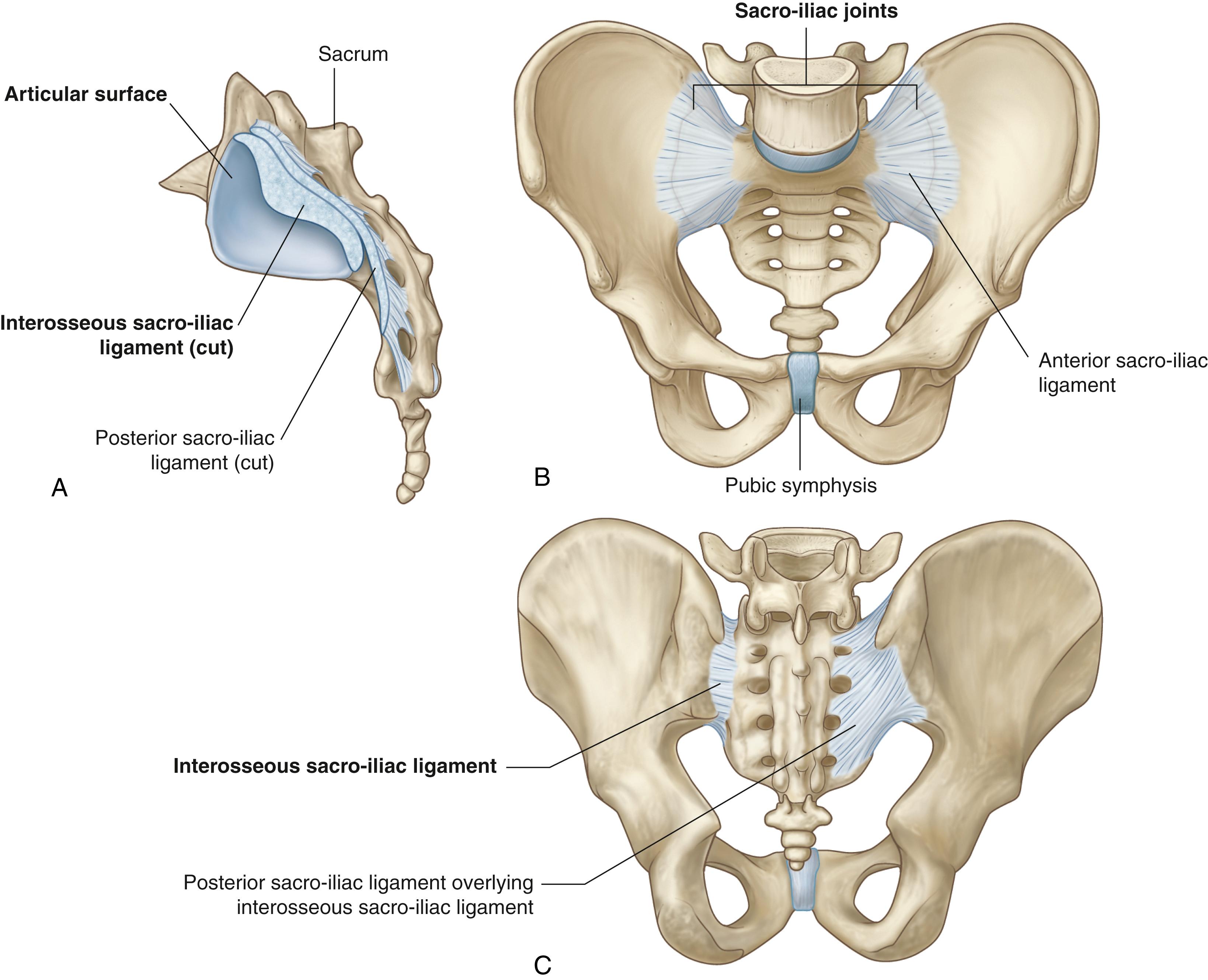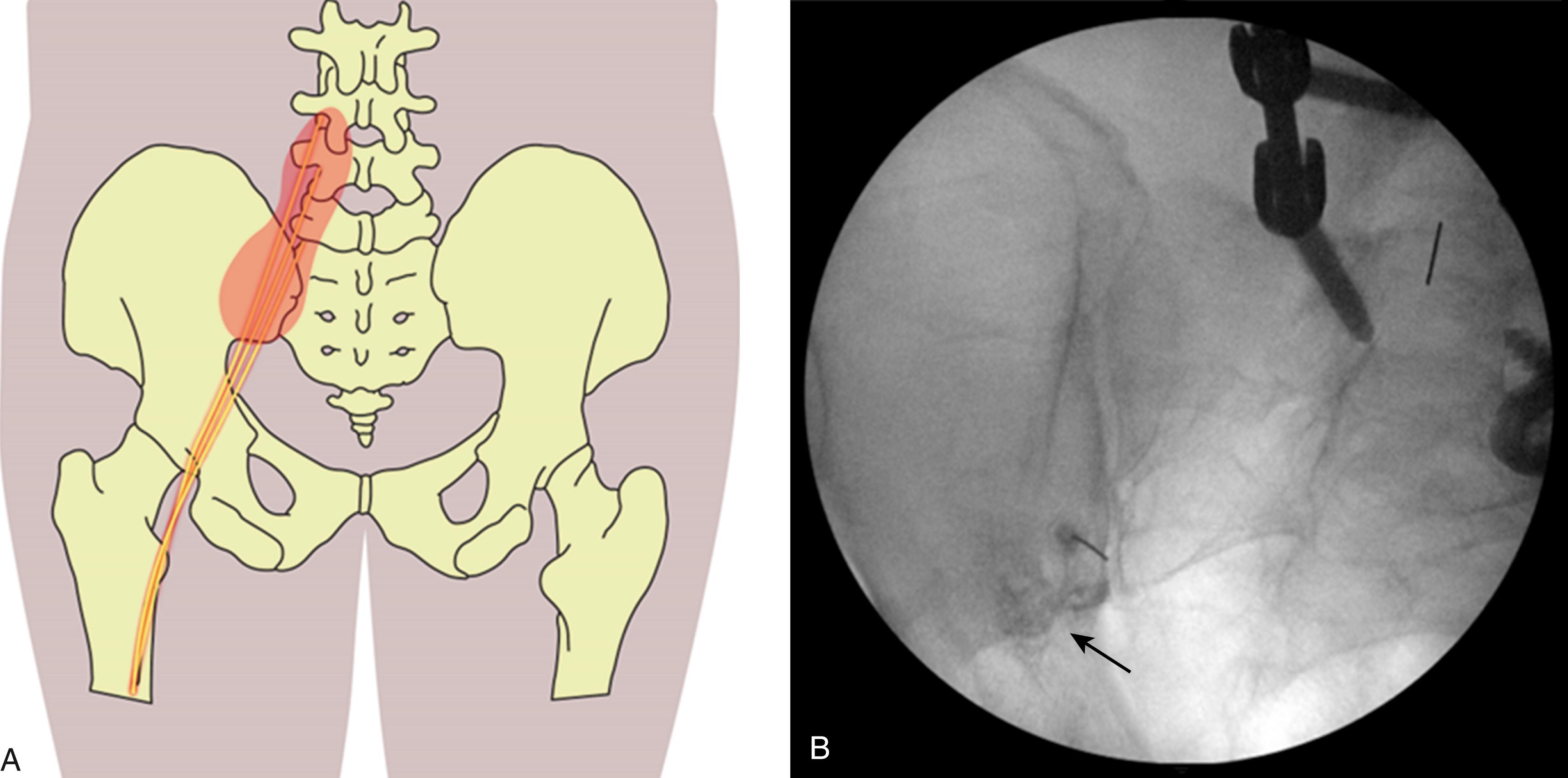Physical Address
304 North Cardinal St.
Dorchester Center, MA 02124
The sacroiliac (SI) joint is responsible for symptoms in up to 30% of patients presenting with lower back pain.
SI joint pain symptoms include low back, buttock, and radiating lower extremity pain and can be easily mistaken for lumbar spine or hip pathology.
SI joint pain lacks pathognomonic clinical examination findings or radiographic hallmarks. SI joint pathology cannot be ruled out by the presence of normal imaging findings.
Physical examination of the SI joint should consist of at least six provocative maneuvers. Patients with three or more positive findings should undergo two separate image-guided diagnostic intraarticular SI joint injections with local anesthetic. If at least 70% of pain is relieved transiently with the injections, the diagnosis of SI joint pathology is made.
First-line therapy for SI joint pain is physical therapy, followed by therapeutic injections with intraarticular steroids and local anesthetics, followed by radiofrequency ablation.
After exhaustion of nonoperative management, there is level 1 evidence that properly selected patients have significant, durable benefit from SI joint fusion.
The authors wish to thank Kenneth J. Holton, MD for his assistance in figure preparation.
The sacroiliac (SI) joint is an often-overlooked cause of low back, buttock, and leg pain. Diagnosis of SI joint pain is difficult because of significant overlap with referred pain from disorders of the lumbar spine and hip. SI joint pathology lacks pathognomonic physical examination or radiographic findings. Correct identification of SI joint pain requires knowledge of presentation, clinical suspicion, dedicated physical examination maneuvers, and diagnostic injection sequences. Pelvic pathology including the SI joint is more commonly covered in orthopedic surgery training, but is often less-emphasized in neurosurgery training. A well-rounded spine surgeon must extend his/her knowledge to include the SI joint to avoid operating on the wrong anatomic pain source for a patient presenting with low back, buttock, and leg pain. The purposes of this chapter are to review the pathophysiology of disorders of the SI joint and to present evidence regarding management of SI joint pathology.
The paired SI joints are among the largest joints in the human body, but have the smallest relative range of motion. Surrounded by large musculature and thick ligaments, the SI joints function to provide some flexibility of the articulation of the bony pelvis to the spine. Load-sharing between the trunk and the lower extremities occurs across the SI joints, making them subject to extremely large forces that can result in pathological pain.
The SI joint is an atypical diarthrodial joint with a large surface area but very small range of motion. It has anatomically unique features not found in other diarthrodial joints: discontinuity of the posterior joint capsule, the presence of both hyaline and fibrocartilage, and a highly irregular joint surface with articulating notches and grooves. The SI joint surface roughly mimics the shape of the auricle of the ear ( Fig. 140.1A ), is oblique to the sagittal plane, and typically provides an articular surface between sacral segments S1‒S3 and both sides of the ilium. , The SI joints therefore allow the triangular sacrum to wedge within the posterior pelvis and resist vertical forces. , The intraarticular surfaces are highly irregularly shaped and are often asymmetric between right and left SI joints, with interdigitating ridges and depressions that act to help resist the shearing forces to which the SI joints are constantly exposed and particularly susceptible. , Multiple strong ligaments help stabilize the SI joints, including the anterior and posterior sacroiliac, sacrospinous, sacrotuberous, interosseous, and iliolumbar ligaments (see Fig. 140.1B and C ). The gluteus maximus muscle perpendicular to the SI joint surface and the thoracolumbar fascia running roughly parallel additionally act as stabilizers. ,

The SI joints have extremely small range of motion, usually less than 5 degrees. This allows adaptive iliac motion relative to the sacrum in a transverse axis. This small rotational and translational movement is called nutation and counternutation. Nutation occurs with lumbar extension as the sacral base translates anteriorly and inferiorly relative to the ilium. Counternutation is the opposite, occurring with lumbar flexion when the sacral base moves posterior and superior to the ilium.
The SI joint has mechanoreceptors and nociceptors in its articular surfaces for proprioception and pain signal transmission. Histological analysis of ligaments stabilizing the SI joints, as well as the anterior joint capsule, has confirmed the presence of nociceptors. Strain of these ligaments or the capsule from abnormal forces or movement across the SI joints can therefore be a significant source of pain, without any representative radiographic pathology. Ligamentous pathology has been suggested as a major mechanism of pain generation in the SI joint. One study comparing histological and ultrastructural characteristics of posterior SI joint and interosseous ligaments in humans with and without SI joint pain found significantly greater collagen degeneration in those with SI joint pain. Patients with inflammatory spondyloarthropathies typically suffer from SI joint pain until autofusion of the joint occurs.
Conceptual understanding of SI joint pathology requires recognition that lumbosacral spine movement and forces are tied to SI joint movement. The SI joint can be destabilized by abnormal force vectors transmitted between the pelvis and the spine, or by ligamentous laxity. Everyday life examples include repetitive impact such as jogging, unilateral pelvic ring loading such as stepping into a hole while ambulating, and very commonly pregnancy, where pelvic ligamentous laxity and increased weightbearing are frequent sources of SI joint pain. Of course, high-velocity trauma with shearing forces can also cause SI joint pathology. Even when sacropelvic fractures are not seen, one should suspect potential SI joint instability in the setting of L5 transverse process fractures that result in tearing of the iliolumbar or lumbosacral ligamentous attachment to the L5 transverse process, because these are major stabilizing ligaments for the SI joint.
Importantly, lumbar fusion surgery alters force vectors across the SI joints and can incite SI joint pain. A literature review analyzing occurrence of SI joint–mediated pain following lumbosacral fusion surgery found wide variability in reported incidences of between 6% and 75%, with an average reported incidence of 37% and onset within 2 years. The incidence of SI joint pain directly increased with the number of lumbar levels fused and with fusion to the sacrum. A very small retrospective study has suggested that the incidence of SI joint–mediated postoperative pain following multilevel lumbar fusion is lower in patients who undergo sacropelvic fixation with S2-alar-iliac screws, suggesting they have a potential stabilizing role. A large, multicenter clinical randomized controlled trial (RCT) of concomitant open SI joint fusion for patients already undergoing long-construct lumbar spinal fusion surgery is underway to evaluate the potential role of SI joint fusion in this population.
In observational studies of patients initially presenting with low back pain, up to 30% of patients have been found to have SI joint pathology. , Patient-perceived burden of SI joint pain is higher than many commonly disabling medical conditions, such as chronic obstructive pulmonary disease and angina. Although prevalent and incapacitating in the spine surgeon’s clinic population, diagnosis of SI joint pain requires a high level of clinical acumen and is often overlooked. SI joint pain does not have a pathognomonic clinical history, physical examination, or radiographic finding. SI joint pathology cannot be ruled out in the setting of normal radiographic imaging.
Referred pain from symptomatic SI joints can mimic other pathology, such as lumbar facet arthropathy, lumbar radiculopathy, and hip arthropathy. Patterns of pain from the SI joint ( Fig. 140.2 ) include radiation over the lumbar spine into the buttock and/or groin and, importantly, lower extremity radiating pain in the L5, S1, or S2 dermatomes. , The reason for inconsistent symptomatic presentations is that the SI joint has individually variable patterns of innervation, predominantly derived from the L5 through S4 nerve roots. , SI joint pain therefore can manifest as referred pain in any of those lumbosacral dermatomes. It has also been suggested that inflammatory mediators from pathological SI joints are directly exposed to the lumbosacral plexus that traverses the anterior SI joint, further resulting in referred lower extremity patterns of pain.

Whereas the majority of patients with SI joint pathology report low back or buttock pain, roughly half of patients with SI joint pathology also report lower extremity pain, which can easily be confused with a spinal radicular source. Hip arthropathy is a frequent cause of groin pain; however, a study of patients without hip pathology and with confirmed SI joint pathology found that 46% of patients also reported groin pain. A study in asymptomatic volunteers localizing lumbosacral sensory distribution of nerves innervating the SI joint using intraarticular local anesthetic injections produced a circumferential region of numbness extending into the lumbosacral junction and buttock 10 cm caudal and 3cm lateral to the posterior superior iliac spine (PSIS). This area overlaps significantly with primary lumbar spine pathological symptoms.
The variety of SI joint symptomatology makes it particularly susceptible to missed diagnosis. This can result in improper surgical targeting of the lumbar spine in the setting of actual SI joint pathology, particularly because lumbar spine imaging often has radiographically abnormal findings. Needless to say, a patient with SI joint–mediated pain does not clinically improve with lumbar fusion surgery.
Become a Clinical Tree membership for Full access and enjoy Unlimited articles
If you are a member. Log in here